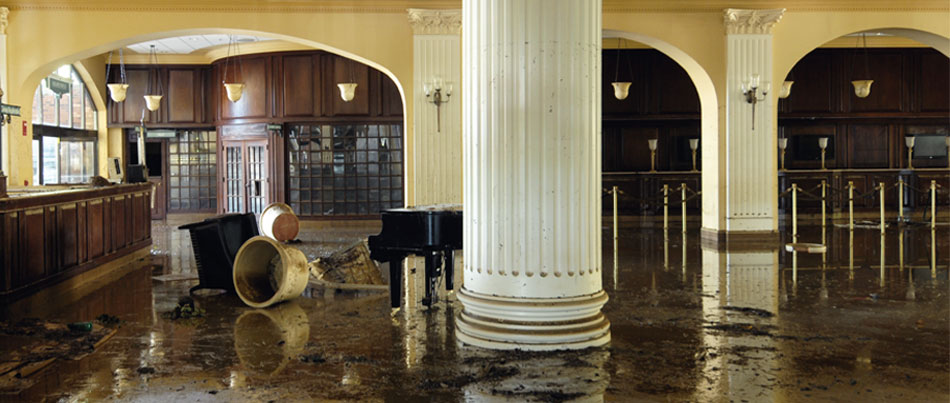Do's & Don'ts of Water Restoration.
Do's & Don'ts of Water Restoration.
Blog Article
Have you been hunting for answers around How To Prevent Fire And Water From Ruining Your Holiday Season?

Though water provides life, water breach on parts where it's not meant to be can cause damage. If the water saturates into your structure, it can peel away surfaces and also erode the foundation. Mold as well as mold additionally grow in a wet environment, which can be dangerous for your health and wellness. Houses with water damages scent moldy and old.
Water can come from numerous resources such as tropical storms, floodings, ruptured pipes, leakages, and also sewer problems. In case you experience water damages, it would be great to understand some safety and security precautions. Below are a few guidelines on how to handle water damages.
Do Prioritize Home Insurance Coverage Insurance Coverage
Water damage from flooding because of heavy winds is seasonal. You can also experience a sudden flooding when a malfunctioning pipe suddenly breaks right into your home. It would be best to have home insurance that covers both acts of God such as all-natural calamities, and emergencies like broken plumbing.
Don't Fail To Remember to Shut Off Utilities
This cuts off power to your entire house, stopping electrical shocks when water comes in as it is a conductor. Don't fail to remember to transform off the major water line valve.
Do Keep Proactive and also Heed Climate Alerts
Tornado floods can be really uncertain. If there is a history of flooding in your neighborhood, stay aggressive and also prepared. If you live near a river, lake, or creek , pay attention to evacuation warnings. Obtain valuables from the first stage and also basement, then placed them on the greatest possible level. Doing so decreases prospective property damage.
Do Not Ignore the Roof
Before the weather condition turns shocking, see to it you have a roofing evaluation. It would be prudent to receive this service yearly as it can minimize complex concerns. If there are no holes and also leakages in your roofing system, you can stay clear of rainfall damages. Your contractor will additionally deal with faulty rain gutters or any other signs of weakening. This will stop water from moving down your walls as well as soaking your ceiling.
Do Pay Attention to Small Leaks
A ruptured pipeline doesn't occur overnight. You might notice gurgling paint, peeling wallpaper, water touches, water spots, or leaking noises behind the wall surfaces. Have your plumbing repaired prior to it results in huge damage.
Do Not Panic in Case of a Burst Pipeline
When it comes to water damage, timing is crucial. Therefore, if a pipeline bursts in your home, right away closed off your main water valve to reduce off the resource. Call a trusted water damage remediation expert for support.
Water provides life, water invasion on parts where it's not expected to be can result in damage. Homes with water damages scent old and also mildewy.
Water damages from flooding fees to heavy winds is seasonal. You may see gurgling paint, peeling off wallpaper, water streaks, water stains, or dripping audios behind the wall surfaces. When it comes to water damage, timing is key.
Some Do's & Don't When Dealing with a Water Damage
DO:
Make sure the water source has been eliminated. Contact a plumber if needed. Turn off circuit breakers supplying electricity to wet areas and unplug any electronics that are on wet carpet or surfaces Remove small furniture items Remove as much excess water as possible by mopping or blotting; Use WHITE towels to blot wet carpeting Wipe water from wooden furniture after removing anything on it Remove and prop up wet upholstery cushions for even drying (check for any bleeding) Pin up curtains or furniture skirts if needed Place aluminum foil, saucers or wood blocks between furniture legs and wet carpet Turn on air conditioning for maximum drying in winter and open windows in the summer Open any drawers and cabinets affected for complete drying but do not force them open Remove any valuable art objects or paintings to a safe, dry place Open any suitcases or luggage that may have been affected to dry, preferably in sunlight Hang any fur or leather goods to dry at room temperature Punch small holes in sagging ceilings to relieve trapped water (don't forget to place pans beneath!); however, if the ceiling is sagging extremely low, stay out of the room and we'll take care of it DO NOT:
Leave wet fabrics in place; dry them as soon as possible Leave books, magazines or any other colored items on wet carpets or floor Use your household vacuum to remove water Use TV's or other electronics/appliances while standing on wet carpets or floors; especially not on wet concrete floors Turn on ceiling fixtures if the ceiling is wet Turn your heat up, unless instructed otherwise

We were made aware of that write-up on Safety Tips To Prevent Fire And Water Damage from an associate on a different site. So long as you appreciated our post please make sure you remember to pass it around. I appreciate reading our article about Reducing Your Risk Of Water And Fire Damage At Home.
Report this page